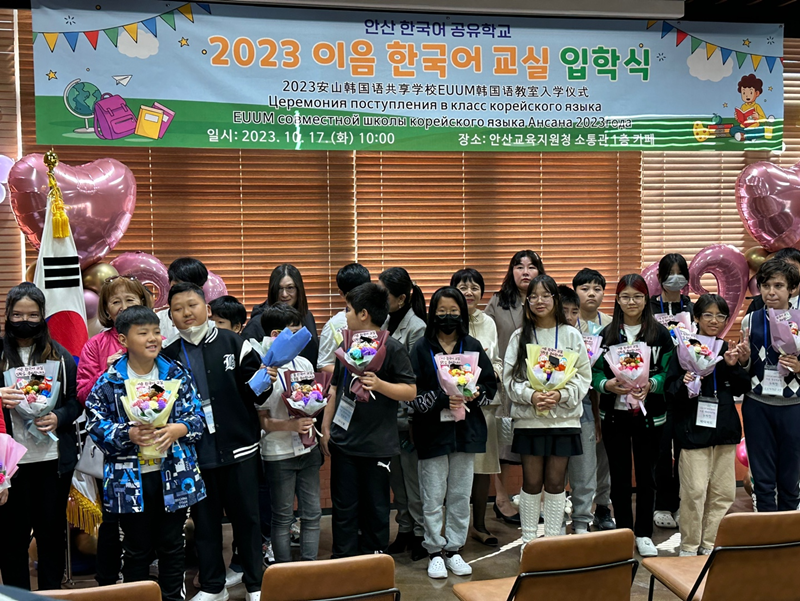
Elementary school students on Oct. 17, 2023, pose for a photo at the entrance ceremony for Gyeonggi Korean-language Sharing School in Ansan, Gyeonggi-do Province, the province's first institution for intensive education in Korean for children of multicultural families. (Gyeonggido Office of Education)
By Koh Hyunjeong
Multicultural families last year saw their number of births rise for the first time in 12 years with over 13,000.
A report on 2024 statistics on multicultural population dynamics released by the Ministry of Data and Statistics on Nov. 6 said the number of births to such families last year reached 13,416, up 10.4% from 2023 and the first rise since 2012.
Thus such births accounted for 5.6% of the country's total of 238,317, up from 5.3% to mark the second consecutive year of growth.
The increase in the number of children born to multicultural families was attributed to a rise in international marriages, which had slowed during the COVID-19 pandemic. Last year, the number of such unions rose 5% year on year to 21,450, the third straight year of growth since 17,428 in 2022.
The most common nuptials of this type last year was between a Korean husband and a foreign wife, accounting for 71.2%. The nationalities of such wives were led by Vietnamese (30%), Chinese (12.2%) and Thai (5.4%) and men from the U.S. comprised the largest proportion of foreign husbands (7%), followed by those from China (6%) and Vietnam (3.6%).
hjkoh@korea.kr